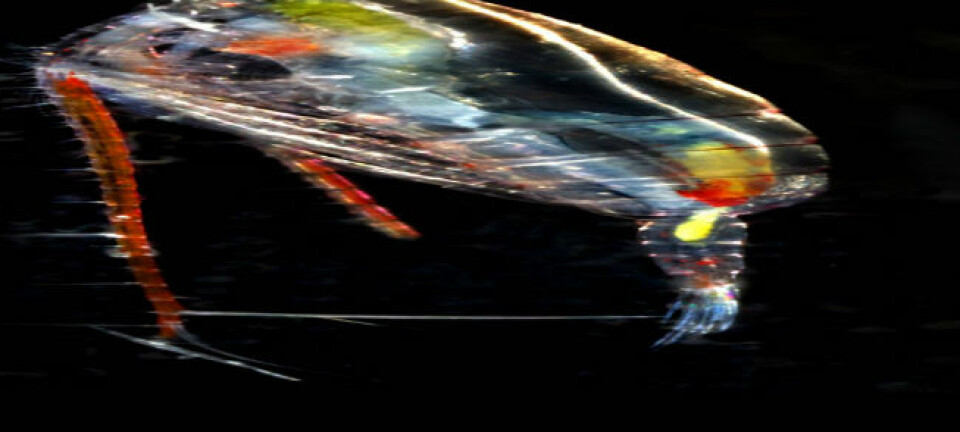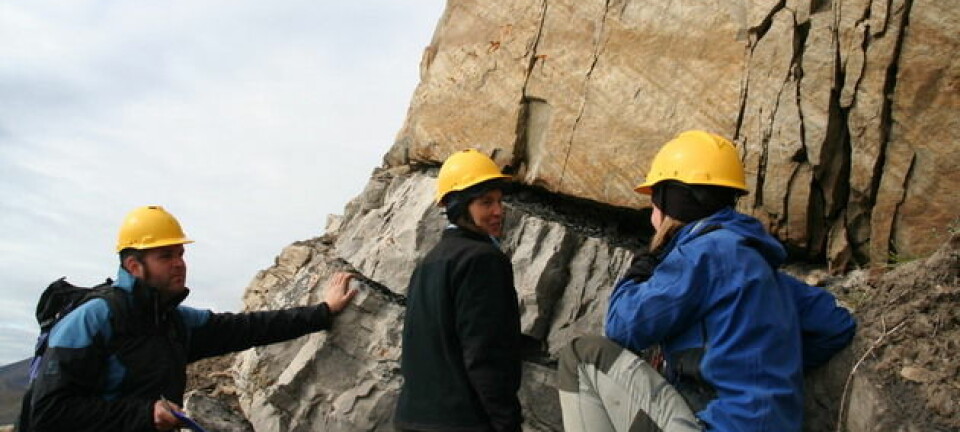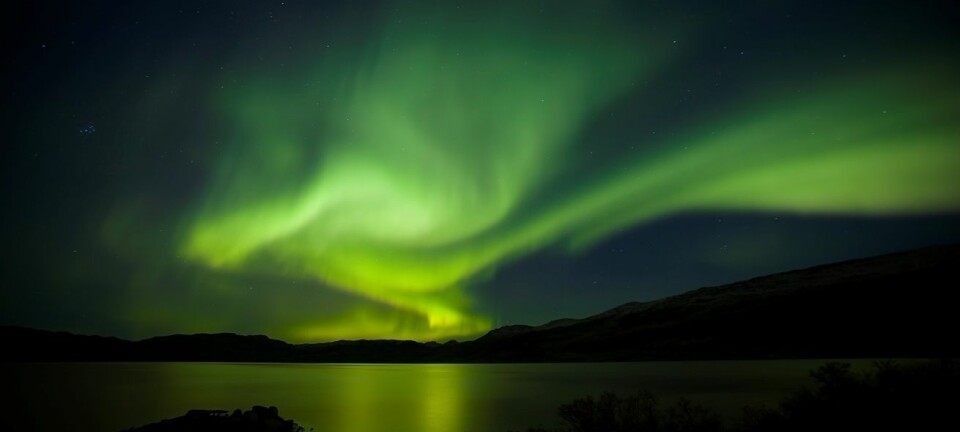An article from Norwegian SciTech News at NTNU
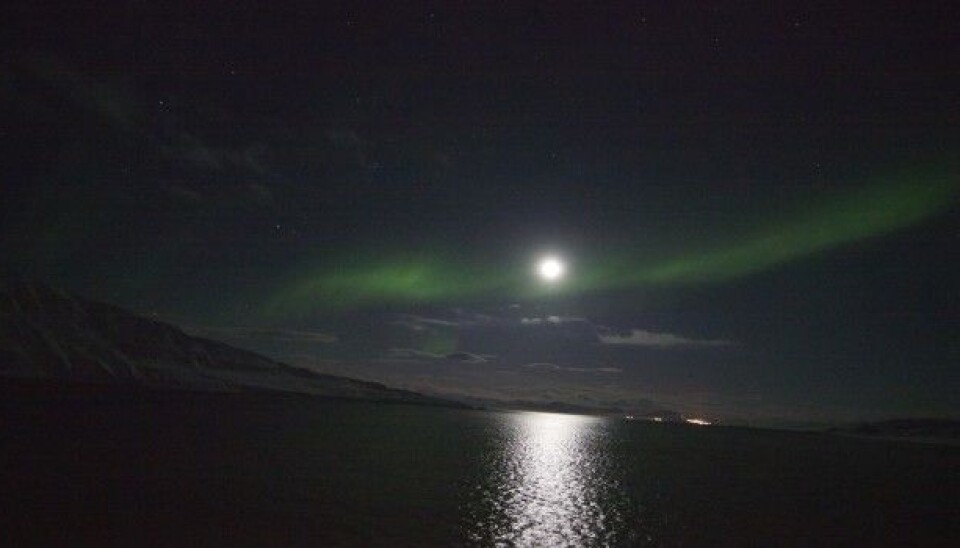
Dark lords, werewolves and Indiana Jones in the polar night
The polar night descends on the arctic archipelago of Svalbard for more than 100 days a year. But even in the depths of this darkness, the oceans are churning with activity.
Every January since 2010, a research boat full of eager scientists from Norway, Scotland and a handful of other countries has found its way to the arctic archipelago of Svalbard to study to what happens in the frigid ocean waters in the complete darkness of the polar night.
And every year they find what they half-jokingly call “dark lords and werewolves,” weird and wonderful creatures that respond to the tiny amounts of light available on even the darkest days of the year, says Geir Johnsen, a marine biologist at NTNU who is among the cruise organizers.
In early January, for example, the researchers have found birds that dive to 30 metres or more into the pitch-black ocean to feast on bioluminescent plankton and krill, deepwater fishes that normally live at depths of 2000 metres foraging in arctic kelp beds just 2 metres deep and a 100-year old whaleboat wreck covered with a red algae that makes a toxin that prevents other organisms from growing on the ship.
“Every time we stick our heads underwater, we find new things,” he says.
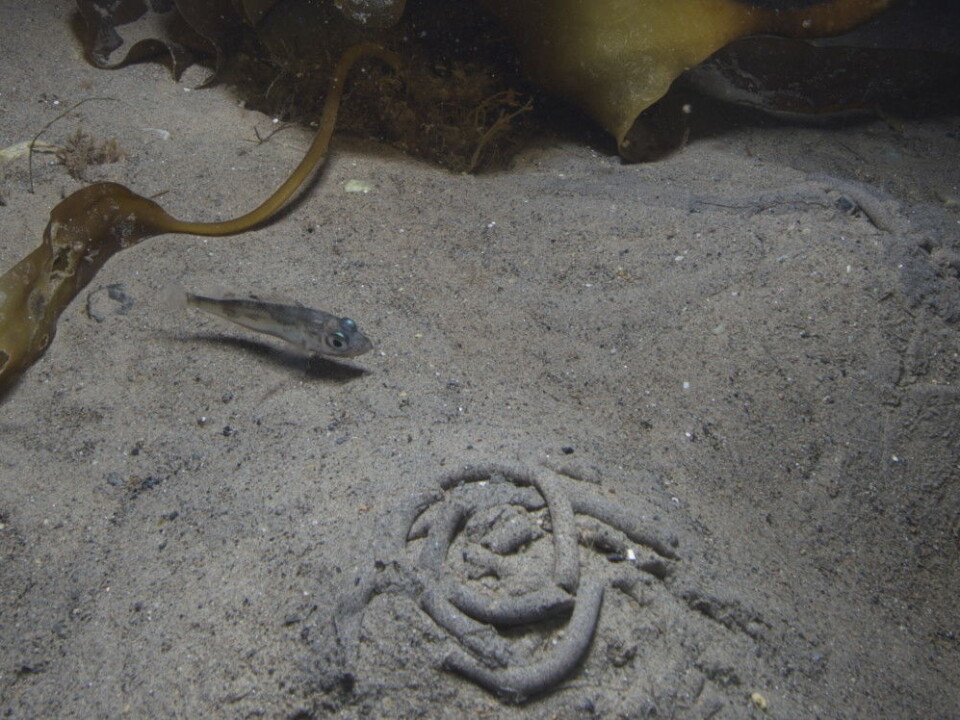
But the biggest find this year may have been a bizarre southern shipworm the researchers found chewing its way through a 100-year-old piece of driftwood. The 7-metre long Siberian larch initially came from Siberia but ended up at a depth of 250 metres in Rijpfjorden, one of the most northerly fjords in the archipelago. The researchers pulled it up off the bottom of the fjord in a trawl designed to collect bottom fishes and molluscs.
Once they pulled it up on the deck, “we cut open the log, and there it was, looking at us,” Johnsen said, a 3-4 centimetre long slimy white mollusc with a big head containing its mouth, with a circular row of teeth for boring into the wood. “It was really cool.”
Scientists are now trying to determine if the shipworm is a new species altogether or just a southern species that has found its way north to Svalbard as the Arctic itself warms. They’re especially concerned if the shipworm spreads, since there are thought to be at least 1000 historical shipwrecks in the waters between Svalbard and Greenland. The shipworm, if it thrives, has the potential to destroy those as-yet unexplored wrecks.
Robots probe the polar night
Ever since the turn of the last century, when Norway’s famed Fridtjof Nansen reported on the results of a three-year-long oceanographic cruise in the Arctic, biologists and oceanographers have believed that there was little activity during the dark of the polar night. Animals that lived through the dark and cold were thought be dormant, making the region a “biological desert.”
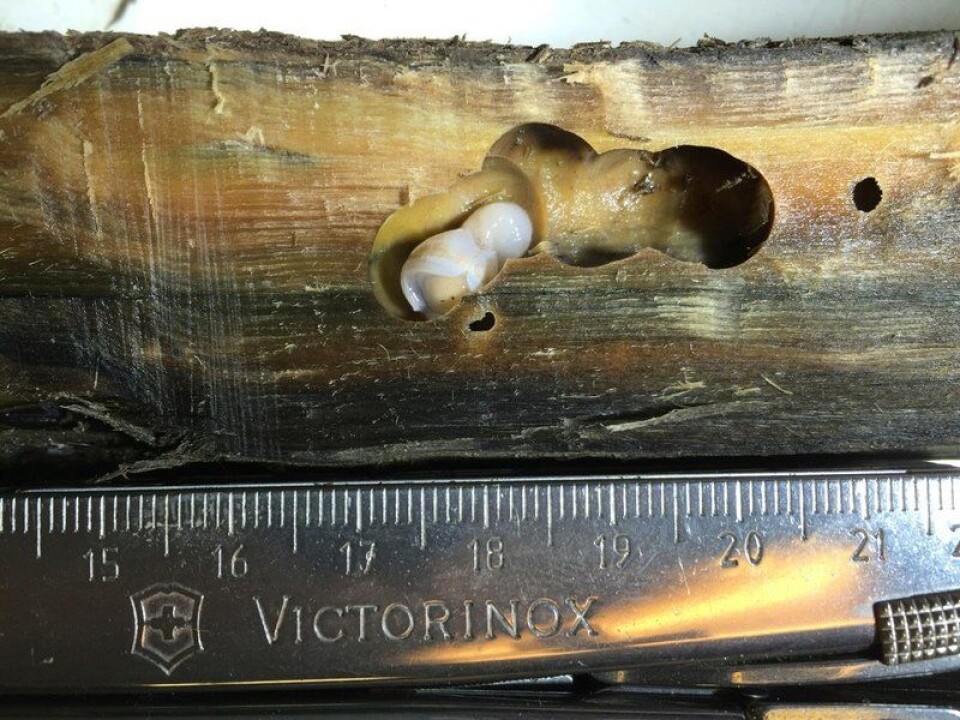
But over the last 10 years, that understanding has shifted dramatically, especially as researchers find new ways to study what happens during the polar night. The trick, of course, is if you want to study the dark, you can’t use lights. That means you have to find ways to move, navigate and measure things using robots or other instruments that can operate where people can’t.
Johnsen, especially, has had a hand in this, in his role working with AMOS, NTNU’s Centre for Autonomous Marine Operations and Systems, and with the AUR Lab, the Applied Underwater Robotics Lab. His goal has been to bring robotic technologies into the service of biology in the form of underwater autonomous vehicles, remotely operated vehicles and even an autonomous kayak, all loaded with different kinds of sensors and machines.
“I’m kind of like a cuckoo chick,” Johnsen said, laughing. “I am an ecologist interested in photo (light) biology, even though some people think of me as an engineer. But I am trying to merge enabling technology with the natural sciences.”
During this winter’s cruise, from 8-24 January, Johnsen and his team used the kayak to move away from the research ship they were on, the Helmer Hanssen, so they could see how much light there actually was for creatures to respond to.
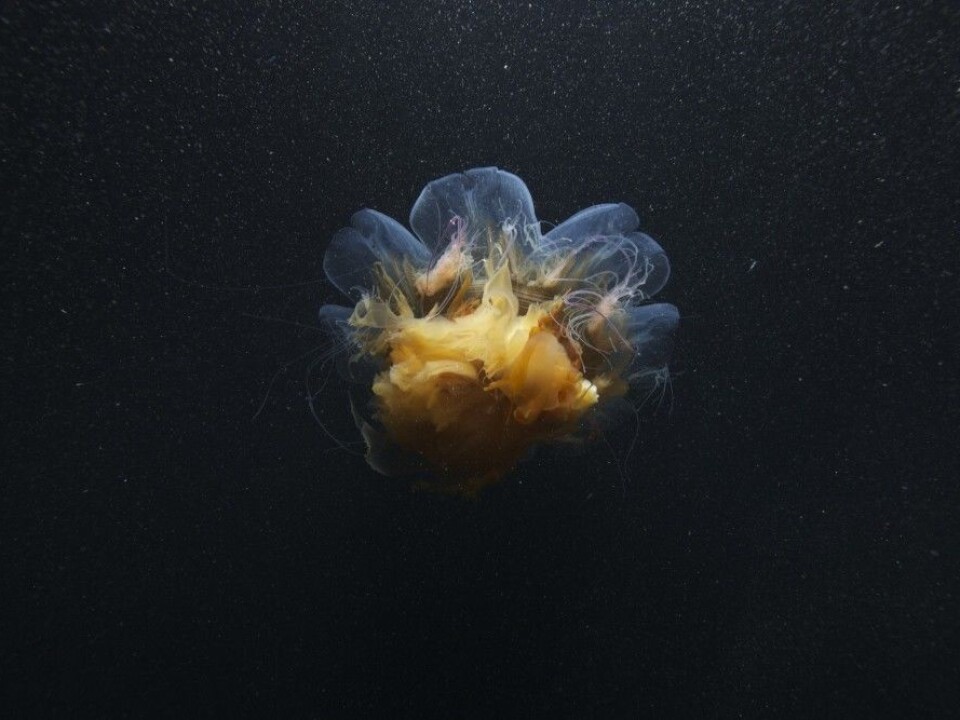
“We had a light sensor to measure light, pointed to the sky, while under the kayak, we had an acoustic plankton profiler,” an instrument that allows them to see what kinds of plankton and how many there were in the waters under the kayak.
The instruments are so sensitive they can even see how plankton respond to the weak light of the sun as it is below the horizon, and the light of the moon.
Werewolves and the moon
One cloudy night when there was a full moon, the researchers sent the kayak away from the boat. The kayak’s plankton profiler measured plankton feeding in the top layer of the ocean, which is full of food but is also a dangerous place if you are a plankton. Plankton are near the bottom of the food chain, and there are lots of other creatures that would like to eat them. But first, those other creatures have to find you. That makes the Arctic dark a perfect time for plankton to fatten up.
Suddenly, however, the moon came out and with the instruments on the kayak, “we saw the zooplankton instantly dove downwards, because they want to get away from the light,” Johnsen said. “And then when a cloud went in front of the moon, they came right back up again.”
The effect of the moon can be so strong that Johnsen and others have taken to calling the changes it causes the werewolf effect. Most importantly, most animals have a daily rhythm that is controlled by sunlight. But what if there is no sunlight?
“The full moon resets their diurnal rhythm,” Johnsen says. “They change their behaviour. The entire ecosystem, from bacteria to blue whales, all of these different organisms respond to this light.”
For example, the researchers found that zooplankton across the Arctic, from fjords to the open ocean, would sink to 50-60 metres below the surface during the six days that the moon was above the horizon. When it was fully dark again, they would rise back up to the surface in what the researchers have called “the biggest daily migration on the planet.”
Bioluminescence, birds and dark lords
Another phenomenon the researchers have documented in recent years is that that as sea ice cover decreases, seabirds are overwintering in the Arctic and diving down into the depths to forage on zooplankton, krill and fish larvae.
Krill, the tiny shrimp-like zooplankton that feed everything from seabirds to blue whales, are usually deep in the ocean to avoid predators, but in the dark they are more likely to come closer to the surface, Johnsen said. He calls this the “dark lord” effect, because these zooplankton would never come so close to the surface in the light.
The seabirds—little auks, northern fulmars, Brünnich’s guillemots, black guillemots, black-legged kittiwakes and glaucous gulls, stay out on the ocean and dive down to feed on the krill.
“The cool thing with these birds is that they are fat,” he said. “There is plenty of food there for them.”
Johnsen says there is a distinct bioluminescent layer at around 30-40 metres deep, and that guillemots and little auks, at least, are capable of diving to these depths.
“This is a hypothesis, but it seems like their eyes are sensitive enough to see their (bioluminescent) prey,” he said.
A recent paper by cruise leader Jørgen Berge from UiT The Arctic University of Norway and co-authored by Johnsen (among others) suggests that light from the bioluminescence might be one aid that the birds use to selectively feed on different organisms.
Indiana Jones and the whaling shipwreck
The research cruise also included Øyvind Ødegård, a marine archaeologist at NTNU’s Department of Marine Technology, who is also a PhD candidate at AMOS and works with the AUR Lab.
Here, the goal was to examine the wreck of a whaling vessel called the Figaro, which sank in 1908. This is the first wreck in Svalbard to be investigated by marine archaeologists, Ødegård said, and knowledge gained from it will help researchers figure out the best ways to manage underwater cultural heritage objects in the Arctic.
Using an remotely operated underwater vehicle, they were able to map the wreck using a 3-D modeling system and underwater hyperspectral imaging, which allows them to detect the different kinds of materials that were found on the wreck, including different types of wood and metals and even whalebones.
The hyperspectral imaging “is a completely new method for mapping a wreck,” Ødegård said. “We’re still doing research to determine how it can best be used for archaeological needs.”
Johnsen and Ødegård are also creating a kind “library” of hyperspectral fingerprints for different materials typically found on wrecks that could be used to analyse the biological and archaeological information they have collected from Figaro.
1000 shipwrecks between Svalbard and Greenland
The researchers are now considering visiting Sorgfjorden, “the fjord of sorrows,” on the northern tip of the main island of Spitsbergen, where there there are at least 15 known shipwrecks, Ødegård said.
In 1683, for example, 13 Dutch ships were trapped and crushed by ice that drifted into the fjord. In 1693 two Dutch whaling ships were sunk there by French frigates.
“The total number of ships could be higher,” he said. “Not all ships left records of their fate.” Additionally, estimates from Dag Nævestad at the Norwegian Maritime Museum show that there could be as many as 1000 shipwrecks between Svalbard and Greenland.
“We know nothing about these wrecks, but we suspect that they could be very well preserved because the water is so cold,” Ødegård said, adding that the shipworm the researchers found in the Siberian larch might threaten these shipwrecks too, if it manages to spread.
“If this shipworm is the result of warmer waters from climate change, then we could be on the clock,” he said. “We might have to hurry.”
Johnsen says one of the most exciting aspect of this type of research is its mix of history, archaeology, biology, and remote sensing technology.
“These are true cross-disciplinary cruises,” he said. “We feel like the marine Indiana Jones.”
An international team
The research cruise, aboard the RV Helmer Hanssen, also included oceanographers from the Arctic University of Norway in Tromsø , the Scottish Association for Marine Science and eye specialists from the University of Delaware (US), who are studying how krill and seabirds cope with such extreme low light conditions.
Other experts came from the University of Toronto, Akvaplan Niva, the University of Laval in Quebec, and the University Centre in Svalbard. UiT, with cruise leader Jørgen Berge, sent several biologists and provided the ship time, while NTNU sent Professors Johnsen and Martin Ludvigsen and a host of MSc and PhD students and robotics experts, including marine archaeologist Ødegård.
Scientific links
- Johnsen, Geir; Candeloro,Mauro; Berge, Jørgen; Moline, Mark.(2014) Glowing in the dark: discriminating patterns of bioluminescence from different taxa during the Arctic polar night. Polar Biology, vol 37
- Kintisch, Eli. (2016) Arctic shipworm discovery alarms archeologists Science. Vol. 351,6276:901 DOI: 10.1126/science.351.6276.901
- Berge, Jørgen; Johnsen, Geir; Sørensen, Asgeir Johan; Nilssen, Ingunn. (2015) Enabling technology for Arctic research. Pan European Networks: Science and Technology Magazine. vol. 15.







